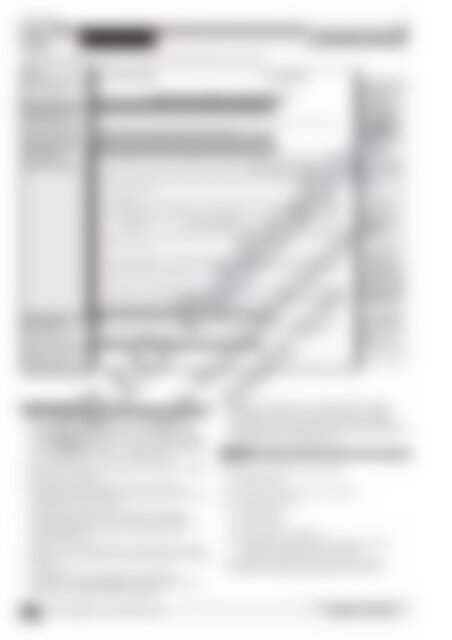RIC-20207 Primary Writing Year 4 – Reports
You also want an ePaper? Increase the reach of your titles
YUMPU automatically turns print PDFs into web optimized ePapers that Google loves.
3 <strong>Reports</strong><br />
TEACHERS NOTES<br />
Structural and language features are shown on the left and right of the text below.<br />
Title <strong>–</strong><br />
the headline states what<br />
is being reported<br />
Classification <strong>–</strong><br />
a sub-head or general<br />
statement about the<br />
subject of the report<br />
Description <strong>–</strong><br />
provides accurate<br />
description and facts<br />
Conclusion <strong>–</strong><br />
a fi nal comment about<br />
the subject of the<br />
report. (It may include<br />
an expert or personal<br />
opinion, or be a<br />
summarising comment.)<br />
Teacher information<br />
The DAILY NEWS<br />
• Read through the newspaper report with the students and<br />
discuss the features of a report. Explain how reporters<br />
follow the ‘inverted pyramid’ style of writing news articles,<br />
where the news item tapers from the most important detail<br />
to the least important detail; i.e. Headline, Main detail (who,<br />
what, when, where, why, how), Incidental detail<br />
• Revise the third person. (See page 38.) Students complete<br />
the analysis on page 48.<br />
• Before students attempt to plan and write their own<br />
newspaper report, model this process with the whole class,<br />
using another subject or issue.<br />
• Students should use page 49 to plan and write their<br />
own newspaper report. They will need to have gathered<br />
information about the subject of their choice prior to<br />
planning their report.<br />
• Students’ reports could be read out orally by them in small<br />
groups or to the whole class, and then discussed. (Purpose/<br />
Audience)<br />
• Published reports, accompanied with appropriate<br />
illustrations, could be displayed for other students to read<br />
and compare. (Publishing/Display/Purpose)<br />
• uses factual<br />
language<br />
rather than<br />
imaginative;<br />
e.g. a fast<br />
growing<br />
problem<br />
• written<br />
in timeless<br />
present tense;<br />
e.g. made,<br />
says<br />
• written<br />
in the third<br />
person; e.g.<br />
people’s,<br />
person<br />
• technical<br />
vocabulary<br />
and subjectspecifi<br />
c terms<br />
are used; e.g.<br />
obesity, Type<br />
2 diabetes<br />
• information<br />
is organised<br />
into<br />
paragraphs<br />
• The activity could be done in conjunction with a health<br />
and values or society and environment topic. Students<br />
could base their report on information they have learned<br />
throughout the topic. Alternatively, it could be a report based<br />
on a school event. (Context/Purpose)<br />
Answers<br />
Page 48<br />
1. (a) Fast food ‘junkies’ on the increase<br />
(b) Teacher check<br />
2. many, world, increase, amount, consumed<br />
3. (a) Paragraphs 2 and 5<br />
(b) Teacher check<br />
(c) Teacher check<br />
27 JANUARY<br />
FAST FOOD ‘JUNKIES’ ON THE INCREASE<br />
Surveys in many countries around the world are showing a marked increase in the<br />
amount of junk and fast food being consumed.<br />
The World Health Society has released the results of surveys from several countries<br />
including the USA, Canada, England, Australia, Germany and New Zealand, which<br />
reveal that the amount of junk food consumed is a fast-growing problem. Junk<br />
foods and fast foods with little nutritional value such as soft drink, hamburgers,<br />
hot chips, fried chicken, biscuits and potato chips are now a regular part of most<br />
people’s daily diet.<br />
‘Diets made up of these types of foods have higher fat, sugar and salt levels’, says<br />
World Health Society spokesperson, Carmen Fisher. ‘Too much junk food could mean<br />
the body is missing out on important nutrients and can also lead to health problems<br />
such as obesity, heart disease, Type 2 diabetes, high cholesterol and tooth decay.’<br />
Ms Fisher says that the average person should eat less than 20 grams of saturated fat<br />
a day. However, just one fast food meal such as a burger and chips can contain this<br />
amount and more!<br />
The survey also shows that families are now spending up to one-third of their<br />
household budgets on junk food meals. This is usually blamed on the modern way of<br />
life with the infl uences of television, advertisers, and a busy, hurried lifestyle making<br />
junk and fast food an easy choice.<br />
‘A balanced diet with a variety of good food directly affects people’s wellbeing’,<br />
says Ms Fisher. ‘A person with a healthy body sleeps well, has energy, maintains a<br />
healthy weight and generally has a happy disposition. An improper diet can have<br />
long-term ill effects on the body.’<br />
Ms Fisher adds that while no-one expects adults and children to always eat healthy<br />
food, junk and fast foods should be considered treats to be eaten occasionally,<br />
rather than as regular meals.<br />
Jonathon Dodd, New York<br />
©R.I.C. Publications<br />
Low Resolution Images<br />
Display Copy<br />
(d) has, maintains, sleeps, has<br />
(e) Families are now spending up to one-third of their<br />
household budgets on junk food meals.<br />
4. The answer should indicate that junk food should be<br />
considered a treat and not a regular part of the diet.<br />
46 R.I.C. Publications www.ricgroup.com.au<br />
PRIMARY WRITING


















